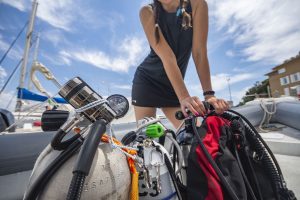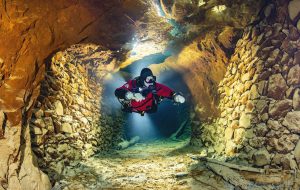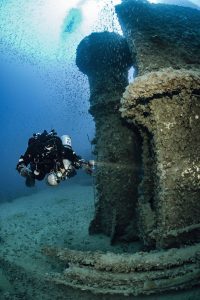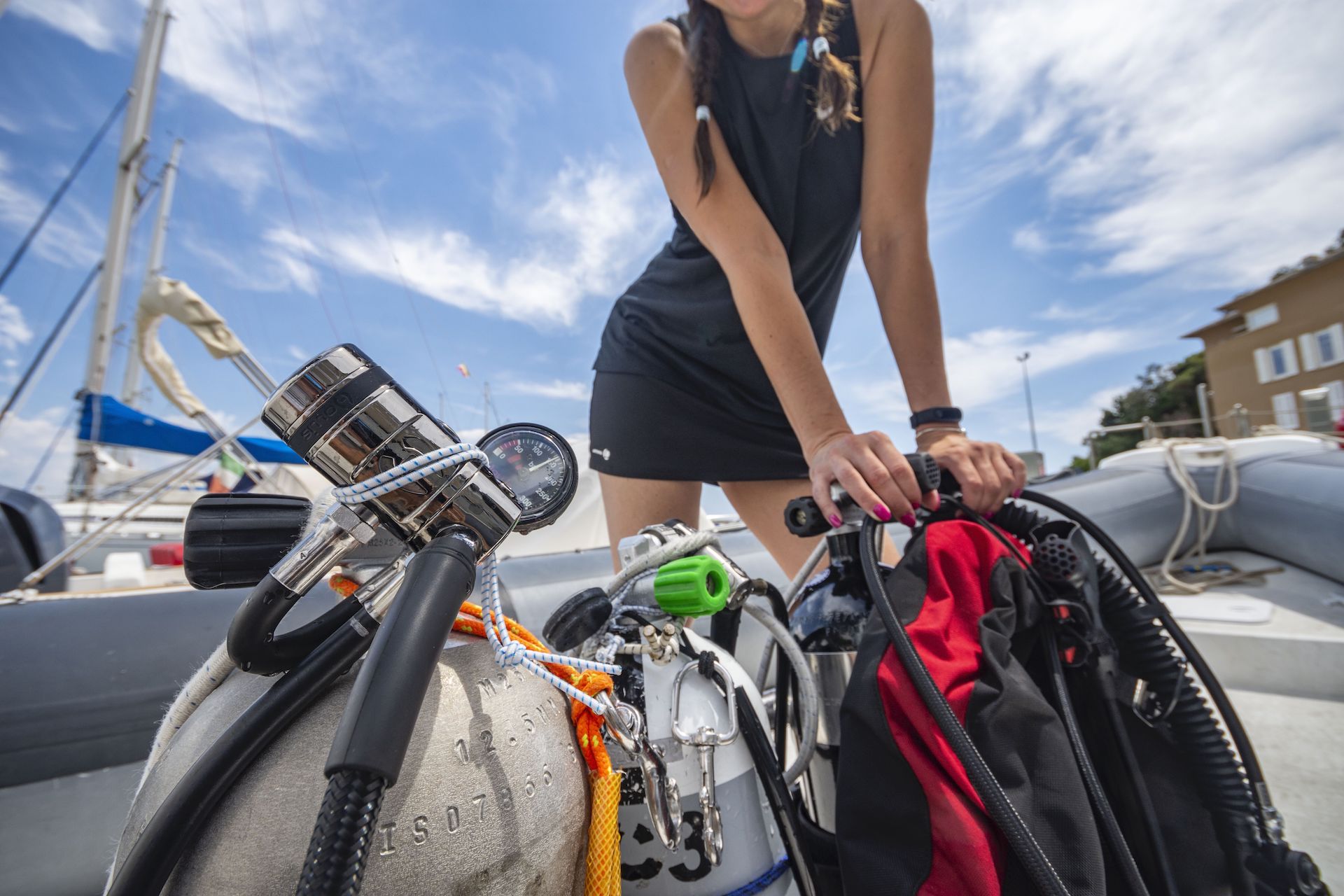
Tech diving is technical. Going deeper and longer is inherently more dangerous, so it can be hard to find beginner-friendly options in the tech diving world.
Where is the line between recreational diving and tech diving? At what point does a dive become technical? The short answer is that any dive that’s deeper than recreational limits—130 feet—is a technical dive.
And likewise, any dive that’s longer in duration than the recreational time limit becomes technical. For example, if you’re at 80 feet, and you stay down longer than your computer says you can at that depth—congratulations, you’re now on a technical decompression dive.
Every single dive, from rec to tech, is a decompression dive. The reason you make safety stops and the reason you make slow ascents are because even if you are within recreational limits, your body still needs time to decompress and purge the nitrogen that it has absorbed.
The minute you go past that invisible depth line, however, you’re now required to make a stop (for a certain amount of time) before heading to the surface. In contrast, on a recreational dive—if you stay within no-decompression limits—then you can go from wherever you are to the surface in an emergency situation with minimal risk. But on a deco dive, you can’t just go to the surface. You have to make a stop—or you might get bent.
All that said, if you are a new tech diver, consider expanding on some of the sites that you are already familiar with instead of jumping into the proverbial deep end. Is there a deeper section of your local wreck that you’ve always wanted to check out? Use those familiar opportunities to plus your diving and gradually familiarize with your technical skills.

Still not sure where to go? Below are three suggestions that make for great intro tech diving sites. For people that want to stretch their new-found tech skills, these three wrecks are within (or close to) recreational limits, but offer more depth and consequence, not to mention intensified deco demands.
1) Hydro Atlantic, Boca Raton, Florida
Resting 1.3 miles off the Boca Inlet at an average depth of 150 feet, the Hydro Atlantic is a 300-foot sunken dredger that welcomes tech divers from around the world.
With a hulking mass, easy access and still-intact rigging, the Hydro Atlantic, while popular, is still definitely not a recreational dive. It mandates consistent dive depths between 120 to 150 feet and makes a logical next step for beginner tech divers trying to level up in a familiar environment.
2) HMCS Yukon, San Diego

Anchoring San Diego’s Wreck Alley, the HMCS Yukon is a popular recreational wreck dive with tons of tech potential. It sits just two miles off the coast of San Diego’s Mission Bay at an average depth of 80 feet (starts at 60/ends at 100).
Even though the Yukon is at an advanced recreational depth, it’s still not quite a tech dive, but there’s so much to see and do that you’ll want to put your tech skills to use and stay down longer.
Also, it’s big! Measuring 366 feet long and 40 feet wide, the Yukon has over 100 rooms/cabins and the inside can be labyrinthine in nature. Silt easily obscures visibility and currents can be strong, so always come prepared with the appropriate equipment and knowledge.
Divers exploring the Yukon often describe it as a maze-like adventure, where navigating its expansive corridors feels like unraveling a submerged story. With such a vast and intricate structure, thorough preparation is essential, and ensuring your equipment is reliable is non-negotiable—many divers choose to get scuba diving gear online to access specialized options. The ship’s immense size amplifies the challenge, as even experienced divers can find themselves disoriented within its silt-filled chambers. Training, planning, and the right tools are critical to safely appreciating this underwater marvel.
3) USS Spiegel Grove, Dixie Shoal, Florida
Located just six miles off the Florida Keys, the USS Spiegel Grove is located in the Florida Keys National Marine sanctuary and sits at an average depth of around 90 feet. At a truly enormous 510 feet long and 60 feet wide, the wreck is massive. In fact, there’s a local refrain that you could dive the Spiegel Grove 100 times and still have more to explore.
With so much to see, the wreck makes for a great introductory tech dive site because there’s ample opportunity to stay longer than your prescribed recreational time limit.






 Canada
Canada Other countries
Other countries

